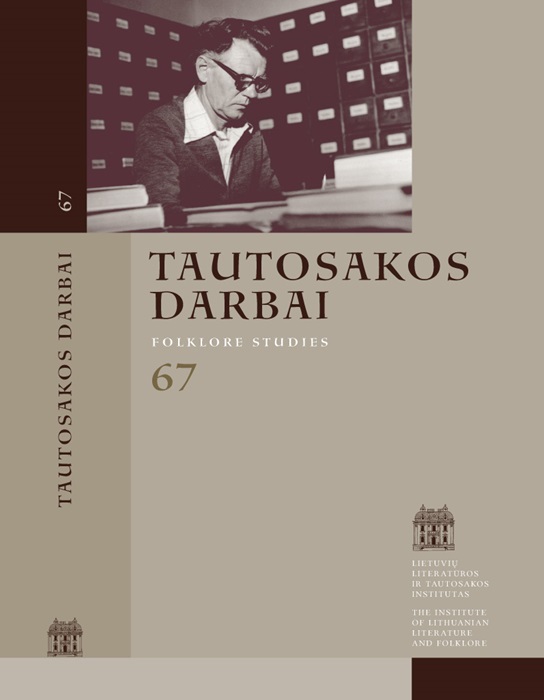“Užkalbėjimas”, “žadėjimas”, “vardijimas”: Outlining the Emic Terminology
Abstract
The currently unanimously used Lithuanian folklore term for charm – užkalbėjimas – became established as late as the 1960s, having replaced other emic terms with similar meaning, namely, žadėjimas and vardijimas, and a number of their prefix variants. All these terms have similar semantic motivation, emphasizing the utterance of the words or text. However, the term žadėjimas stands out among them, since it means the kind of charming in the result of which the words uttered by the charmer have the power of coming true.
The old age of the terms in question is attested by the aged dictionaries from the Eastern Prussia and the Lithuanian written sources. On the Lithuanian territory, these terms have been recorded somewhat later, but they have been preserved in the living oral tradition for a long time. Their regional distribution is uneven. The word užkalbėjimas is mostly used in eastern and southern Lithuania, being less frequent in southwestern Lithuania (Užnemunė) and almost unknown in Samogitia. Its other prefix forms (atkalbėjimas, nukalbėjimas, apkalbėjimas) are used only in eastern Lithuania, forming local areas of distribution. The form with no prefix (kalbėjimas) is rather typical for southern Lithuania. The emic term žadėjimas (literally, “promising”) is most frequent along the eastern Lithuanian border, where it is still used nowadays. Until the middle of the 20th century, it was also popular in Užnemunė. However, the vernacular term vardijimas (literally, “naming”, or “counting out”), contrary to the previous ones, was spread across Samogitia and northern Lithuania. Today it is no longer used to denote charms.

This work is licensed under a Creative Commons Attribution 4.0 International License.
Downloads
Most read articles by the same author(s)
- Daiva Vaitkevičienė, Charming and Praying: the Soft Power in the Lithuanian Charms , Tautosakos darbai: Vol. 64 (2022)
- Austė Nakienė, Daiva Vaitkevičienė, Vita Džekčioriūtė-Medeišienė, Gražina Kadžytė, Aurimas Bačiulis, Vida Savoniakaitė, Lina Būgienė, Chronicle , Tautosakos darbai: Vol. 55 (2018)
- Daiva Vaitkevičienė , At the Roots of the Tree of Life: Marija Gimbutas among the Family Women , Tautosakos darbai: Vol. 62 (2021)
- Daiva Vaitkevičienė, Mead in the Baltic Society: from Beekeepers to Nobility , Tautosakos darbai: Vol. 51 (2016)
- Daiva Vaitkevičienė, Following the Pathways of Greimas’ Mythology , Tautosakos darbai: Vol. 53 (2017)
- Daiva Vaitkevičienė, Rolandas Petkevičius as Researcher of Lithuanian Ethnopsychiatry , Tautosakos darbai: Vol. 54 (2017)
- Daiva Vaitkevičienė, The Sacred Coexistence: Wild Animals in the Peasant Homestead , Tautosakos darbai: Vol. 56 (2018)
- Daiva Vaitkevičienė, Dainius Razauskas, Researching Mythology – with the Heart and from the Heart. Daiva Vaitkevičienė interviewing Dainius Razauskas , Tautosakos darbai: Vol. 60 (2020)
- Daiva Vaitkevičienė, A Book about a Unique Collection of Latvian Charms , Tautosakos darbai: Vol. 61 (2021)
- Daiva Vaitkevičienė, Foreword , Tautosakos darbai: Vol. 62 (2021)
